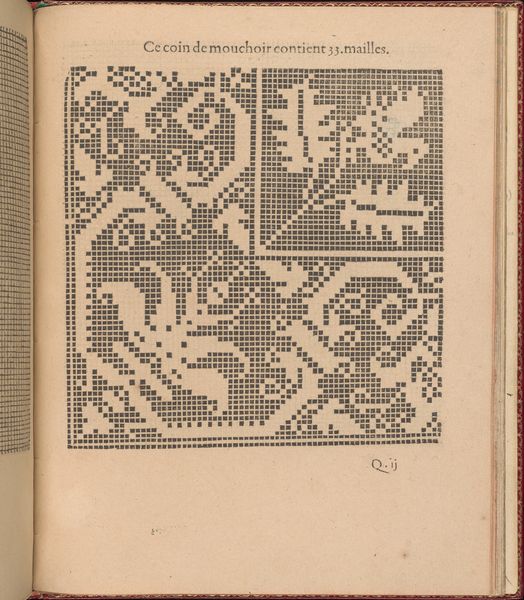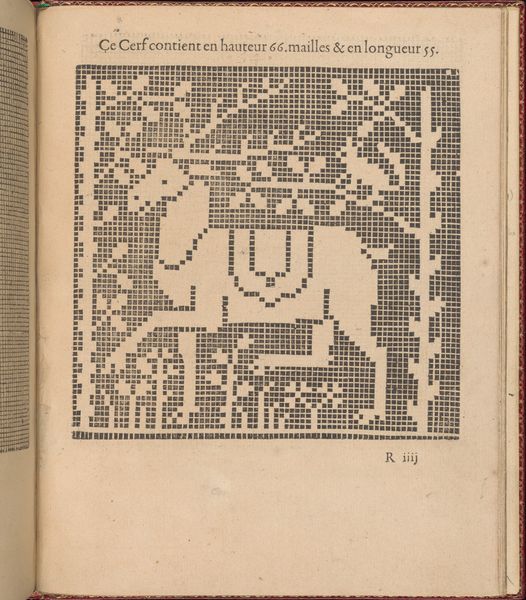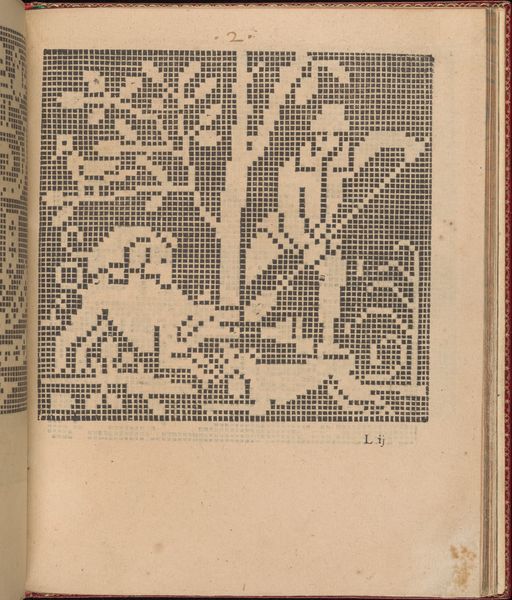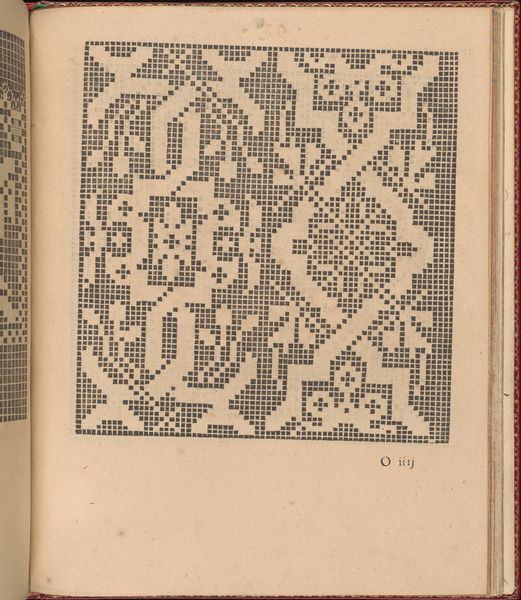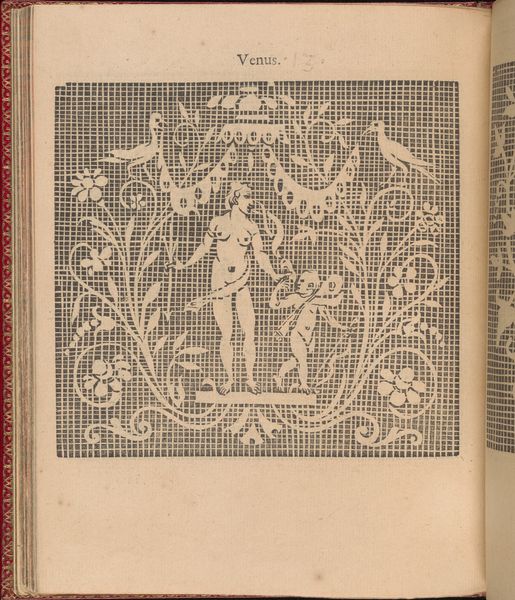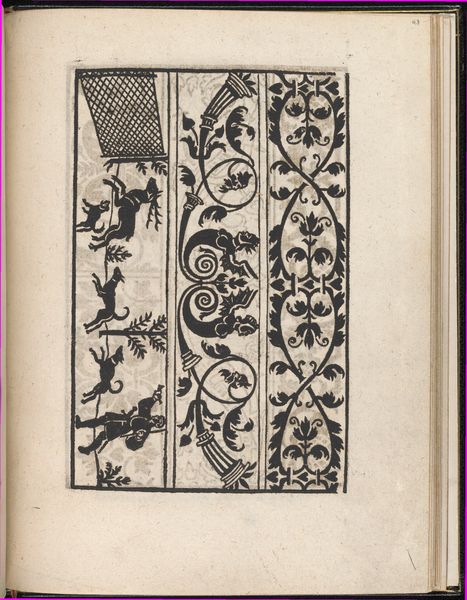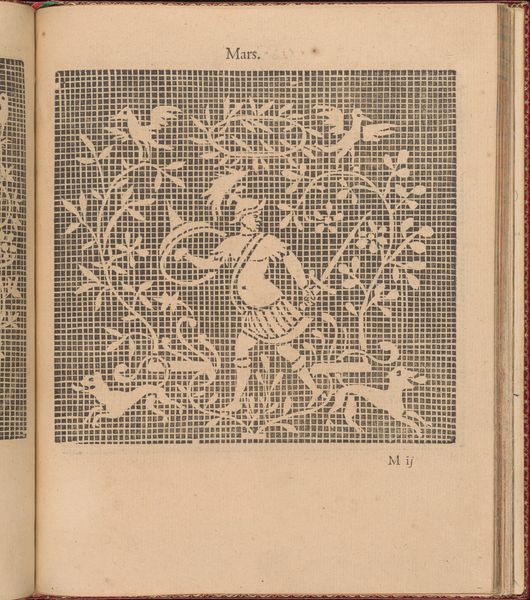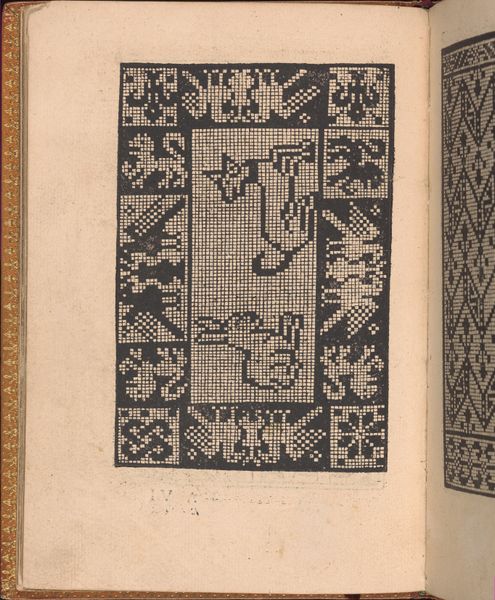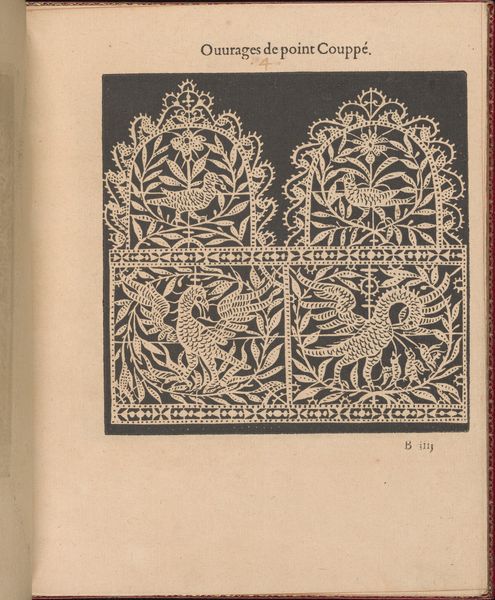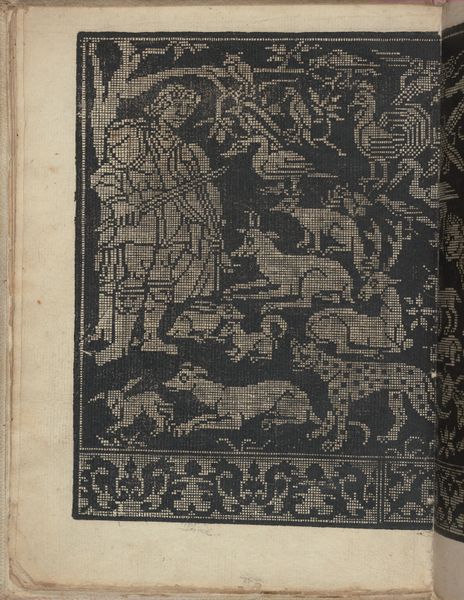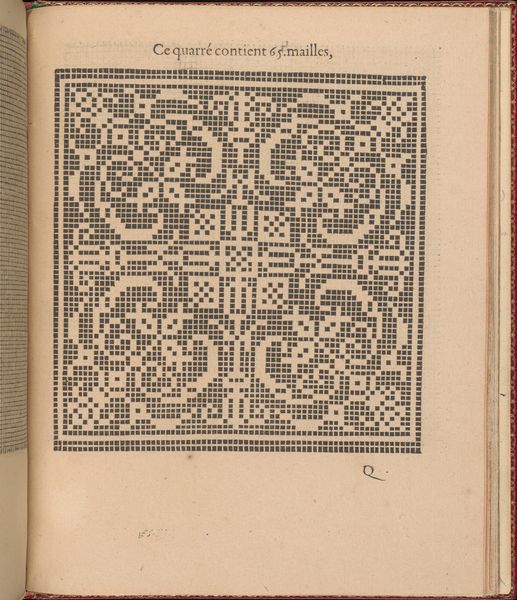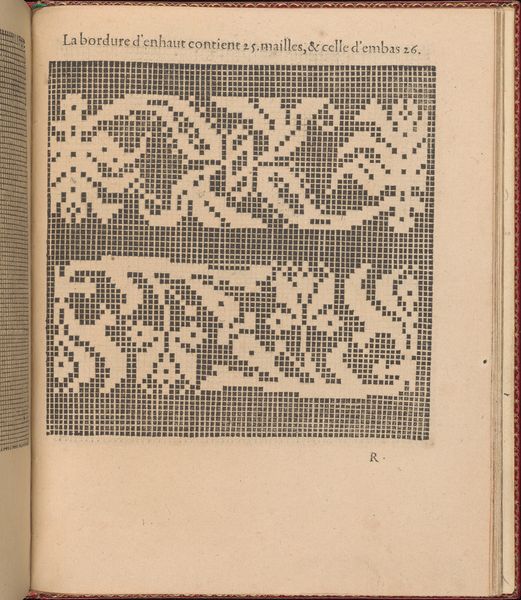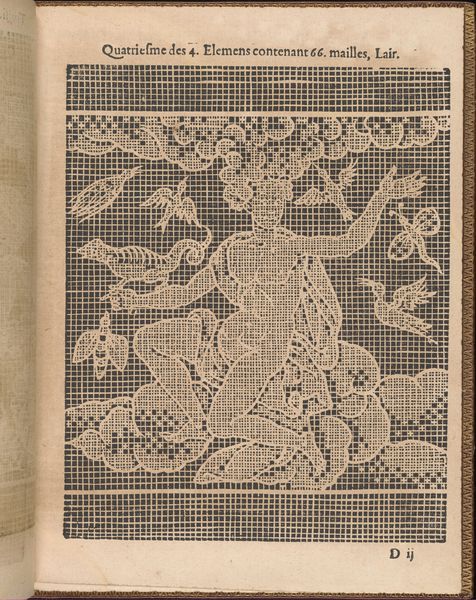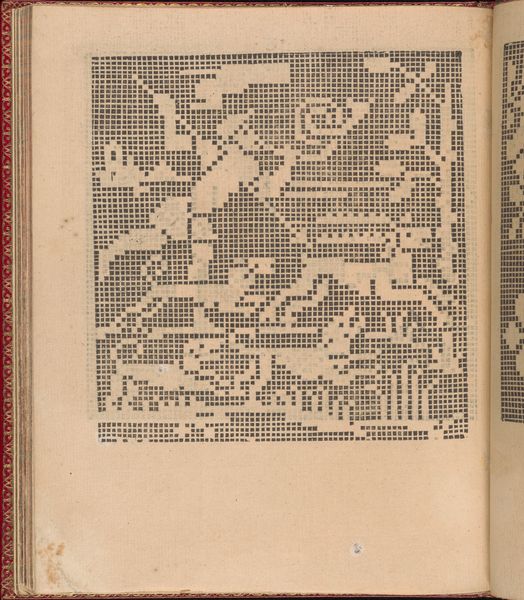
Les Singuliers et Nouveaux Portraicts... page 64 (recto) 1588
drawing, print, woodcut
drawing
figuration
11_renaissance
geometric
woodcut
Dimensions: Overall: 8 1/16 x 6 5/16 in. (20.5 x 16 cm)
Copyright: Public Domain
Curator: Looking at "Les Singuliers et Nouveaux Portraicts…" a page from a printmaking book by Federico de Vinciolo from 1588, now in the Met, it feels like viewing a digital rendering long before computers even existed. It’s a woodcut depicting a lion, entirely composed of small squares, a geometric marvel for needlework patterns. Editor: It's kind of charming, isn't it? In a way that's so rigid but ultimately, a rather beautiful kind of stylized awkwardness emerges. I imagine somebody meticulously tracing out those tiny blocks with their needle. Did each stitch become its own sort of individual, small performance of making? Curator: Precisely! This page served as a template. Think of the countless hours dedicated to crafting textiles, from the labor in preparing and weaving the cloth to then decorating it, all based on designs like this. De Vinciolo essentially industrialized artistry by giving patterns to artisans. It challenges the hierarchy separating “fine” art from the practical crafts. Editor: I love thinking about that connection—taking this, what some might deem a functional object— and infusing this with my own interpretation; and giving this new agency, almost like an act of resistance against the purely functional. The human impulse towards creative adornment is irrepressible, I suppose. Curator: And don't forget the context. The Renaissance was obsessed with symbols, particularly animals. Lions, often seen in heraldry, carried significance, representing bravery and nobility. So each maker imbued the tapestry with social aspirations by incorporating certain images in very prominent placement. It speaks volumes about what those living then prized in a cultural landscape. Editor: Yes! This little square becomes a cultural statement in its own right, which seems like a pretty radical gesture for something so minute. In a time dominated by grand narratives, something like this can stand as a fascinating story told in simple materials that echo deeper complexities. Curator: Exactly. Considering its age, material construction, function, this piece gives so much into the nature of production. Editor: Indeed, this offers so many more stories, even than the stitches composing the magnificent beast within.
Comments
No comments
Be the first to comment and join the conversation on the ultimate creative platform.
